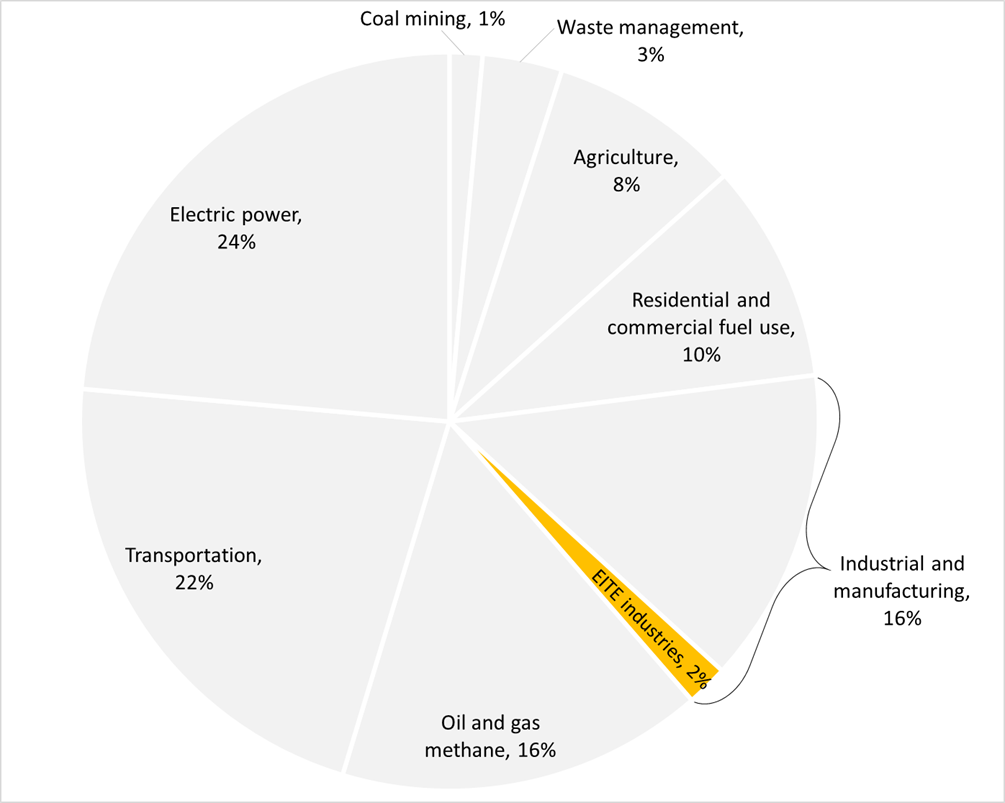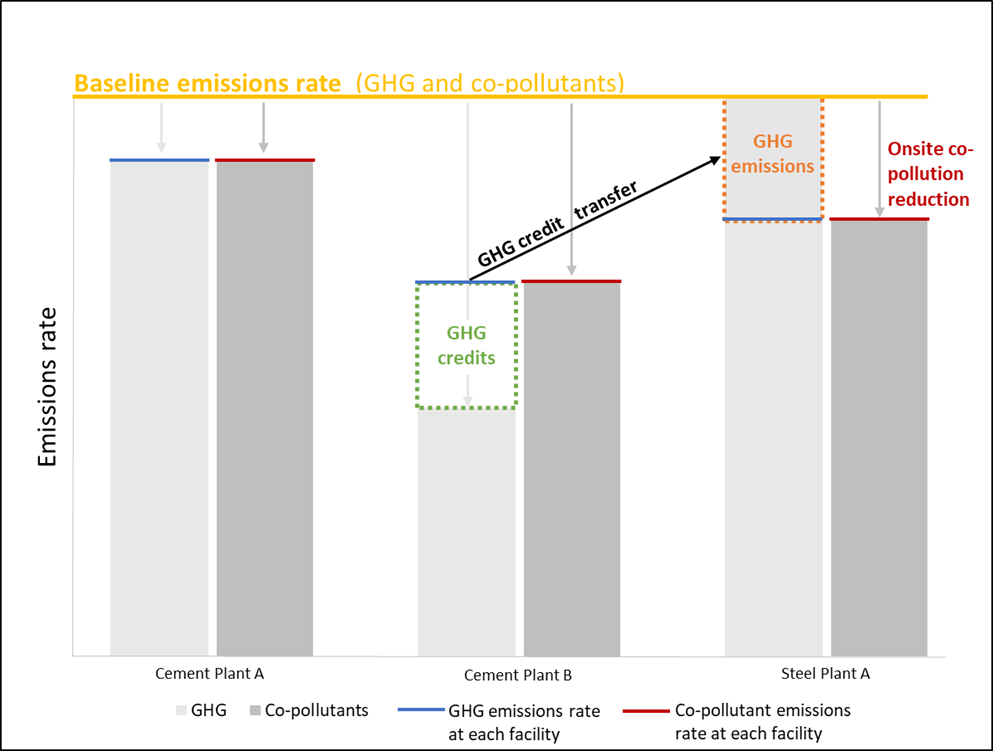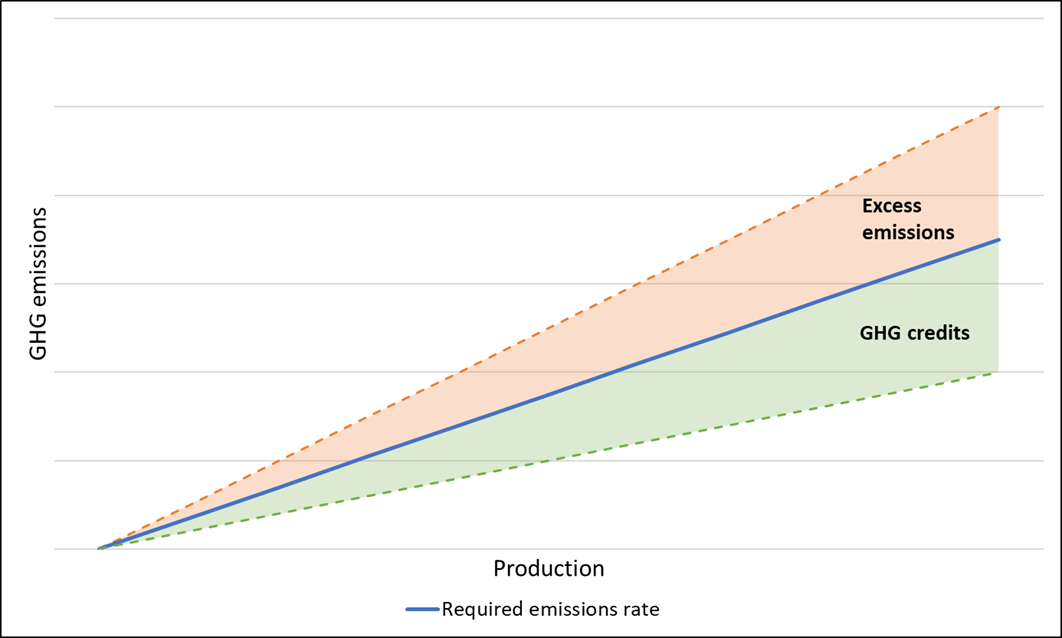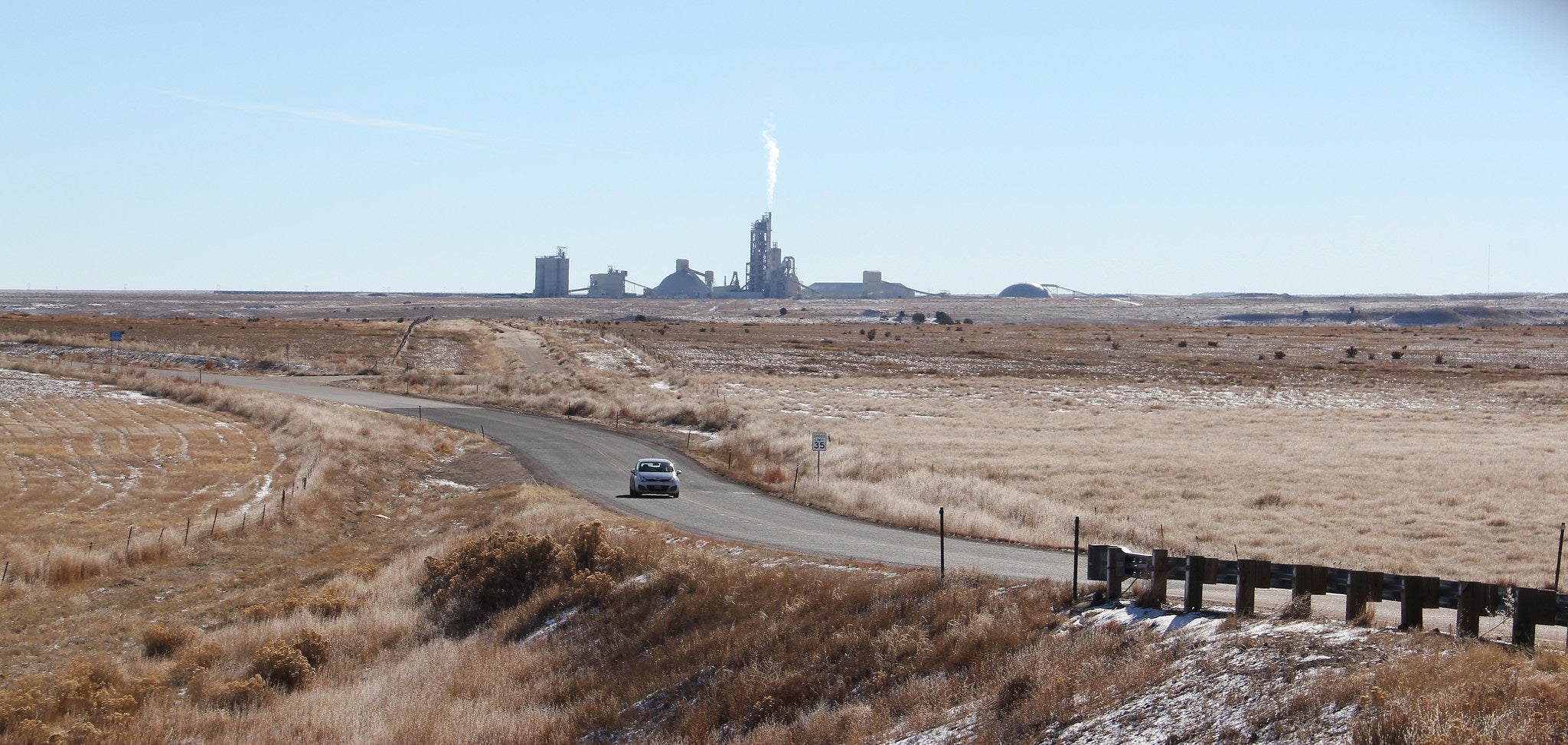As the 2022 legislative session in Colorado gets underway – with many climate and environmental issues on the agenda – it’s important to take stock of what legislators accomplished on this front last year. One key action we’ve been tracking closely and hope to see progress on this year: Curbing climate pollution from industry and manufacturing.
On top of Colorado’s existing obligation to cut emissions across the economy, established in the state’s Climate Action Plan in 2019 (HB 19-1261), the legislature passed an additional mandate last year directing the state’s Air Quality Control Commission (AQCC) to adopt rules that ensure climate pollution from the industrial and manufacturing sector falls 20% below 2015 levels by 2030.
As we detail below, even with this further direction from legislators and some positive steps, progress on reducing emissions continues to be slow. In the fall, the Commission adopted a new rule that takes aim at climate pollution from four specific industrial facilities in Colorado. The new rule marked an important step forward as the first rule directly regulating climate pollution from one of the state’s major source categories, though together these facilities account for just 2% of the statewide emissions (see Figure 1 below).
Figure 1: New industry rules address only 2% of Colorado’s GHG emissions

In Phase One, the AQCC addressed a subset of the industrial and manufacturing sector that is energy intensive and trade-exposed (EITE); the rest of the sector will be covered in a Phase Two rulemaking. The figure depicts 2019 emissions by sector based on Colorado’s GHG Inventory. 2019 emissions from the EITE sources are from an April 2021 stakeholder presentation by the Air Pollution Control Division. Emissions are estimated in carbon dioxide-equivalent using the Intergovernmental Panel on Climate Change Fourth Assessment 100-year Global Warming Potential values.
Some of the provisions of the new regulation earn strong marks for environmental integrity: the new emissions trading program will ensure that pollution is accurately tracked and any credited reductions are real and verifiable, while simultaneously ensuring local communities benefit from anticipated reductions in locally-harmful air pollution. Unfortunately, the Commission also adopted provisions that have the potential to severely undermine progress on reducing emissions from these sources.
Moving forward, the Commission must swiftly follow through with the second phase of this rulemaking—ensuring that emissions across the entire sector fall 20% by 2030. Here’s what you should know about the rules and how AQCC should strengthen industrial sector rules.
Why it matters that four industrial facilities get a special ‘status’
Before getting into the upsides and downsides of the new rule, it’s critical to understand the special status given to the four covered facilities. These facilities are classified as “energy intensive and trade-exposed” – a legal status that indicates risk of “emissions leakage,” if lower production in Colorado could end up increasing production – and emissions – outside the state. The legislature provided a path forward for regulating these sources: companies manufacturing cement or steel can continue to increase their emissions, as long as they do so while deploying the “best available emission control technologies” for greenhouse gas pollution, and also securing reductions consistent with an additional 5% of their emissions.
To implement this standard, a third-party auditor will evaluate each plant and rank technologies that are readily available, technically feasible and cost-effective to reduce emissions. Importantly, the audit includes an analysis of co-pollutant reductions and will recommend strategies that achieve greater benefits for neighboring communities. The Commission then uses that information to set the bar for a performance standard at each facility – the amount a facility can emit per unit produced. This “intensity-based” approach does not guarantee that absolute emissions (tons of pollution in the atmosphere) go down – particularly if production goes up.
Commission paves the way for reducing emissions intensity and protecting air quality
Once the Commission sets the performance standard, facilities have multiple options to meet it: 1) installing the technologies that were identified in the audit, 2) implementing any other technologies of their choosing that achieve the same performance level (emissions per unit produced), or 3) participating in an emissions trading program with the other cement and steel plants.
Figure 2 illustrates the nuts and bolts of the third option. The emissions trading program can accelerate and deepen near-term emission reductions, allowing facilities that over-achieve their emissions rates to be awarded “GHG credits” to sell or use themselves in the future – encouraging earlier and more ambitious action. Accelerating near-term reductions is crucial to minimize the cumulative build-up of climate pollution in the atmosphere and, therefore, to secure the safest pathway for Colorado communities.
Figure 2: Mechanics of the emissions trading program and air quality protections

The Commission sets the bar at each facility for a greenhouse gas performance standard, depicted in blue lines. Notably, that bar moves with annual production—total pollution levels are not guaranteed as production levels change year-to-year. In this example, Cement Plant B is able to reduce one ton of pollution at a lower cost than Cement Plant A or Steel Plant A. Because Steel Plant A can purchase GHG credits from Cement Plant B, Cement Plant B has an incentive to over-achieve its requirements. Importantly, all facilities must achieve the associated co-pollution reductions onsite. The figure is illustrative and does not represent real quantities of climate and co-pollutant emission reductions from the rule, nor does it capture the cumulative climate benefits as emission reductions are sustained over time.
The Commission also built in three strong provisions that can ensure environmental integrity, improve local air quality and drive vital near-term reductions in pollution.
- First, the Air Pollution Control Division will develop a comprehensive and transparent system to track and account for pollution reductions. The system must include core elements that were carefully crafted by the legislature in the Environmental Justice Act (HB 21-1266) to safeguard the integrity of the program, including that GHG credits represent a ton of pollution reduced and cannot be double counted.
- Second, the program builds in protections to secure local air quality benefits. Regardless of which of the above options the facility chooses to meet its compliance obligation, it must ensure co-benefits achieved by the program stay within local communities. This kind of framework, though currently narrow in scope at cement and steel plants, offers a potential model for other regulations by creating opportunities to drive earlier and deeper emission reductions while ensuring protections for local communities, particularly for communities disproportionately impacted by pollution.
- Finally, the Commission took an important stand to ensure facilities achieve near-term reductions in pollution. While the Polis administration proposed to give facilities a pass on near-term reductions in exchange for a pledge to implement large projects, like carbon capture and storage, that might be promising for long-term decarbonization in these industries, Commissioners recognized the imperative to lock in near-term emission reductions without waiting on future technologies. They also acknowledged the potential value of larger investments that could lead to deeper reductions. Moving forward, it will be essential for the Commission to put a policy framework in place that ensures that reductions at the scale driven by those potential investments are also captured. This shouldn’t be an either/or proposition.
But a loophole could undercut much needed pollution progress…
Industry can take credit for pollution reductions already counted in the electricity sector. Specifically, those four industrial sources can count renewable electricity projects toward the additional 5% emission reductions they’re required to achieve. This is a problem primarily because the Polis administration has insisted on taking a “sector-by-sector” approach, and therefore “accounts” for reductions in the electric power sector separately from the industrial sector. Renewable energy deployed to meet electricity load in Colorado – even customer-sited renewable energy – is helping secure the carbon reductions required from the state’s electricity suppliers, and therefore already accounted for in power sector projections.
Moreover, emissions associated with electricity use are not included in industrial sector emissions projections. If the industrial sector takes credit for these reductions, then pollution cuts claimed by the state are double-counted and will not add up to the levels required. Regulators have declined to develop any transparent system for enabling multi-sector frameworks for reducing emissions, though inclusion of this program feature strongly suggests the AQCC and state agency staff understand the logical advantages of designing programs that engage multiple sectors. But to properly enable multi-sector emission reductions, the Division would have to create a program with the same compliance instruments used across sectors – instruments that actually represent one ton of pollution reduced. Those units of measurement exist, but the Commission instead opted to conflate “renewable energy credits” (RECs), which represent the energy generated by a renewable resource, with carbon reductions relative to a baseline intensity – allowing industry to “count” something as a carbon “reduction” that does not equal one ton of pollution reduced. Ironically the Polis Administration’s new regulation includes multi-sector trading – but unfortunately crafted in a way without any environmental integrity, leaving required emission reductions on the table.
On top of this, the Commission authorized renewable energy projects that already exist to fulfill this obligation. Renewable energy that was announced in 2019, for example, is not the result of the new regulation adopted in October – and more importantly, counting “reductions” associated with projects that have already been deployed will do nothing to move the needle at a time when Colorado is off track from achieving its climate targets.
This renewable energy loophole outright contradicts the accounting and trading protocols adopted in the same rule. As directed by the legislature, the trading program requires that GHG credits represent real, quantifiable pollution reductions and prevent double-counting – crucial standards to achieve climate progress. To the contrary, the renewable energy option gives credit to projects that already exist and allows the same renewable energy to check the box on requirements in both the power and industrial sectors – all while using an accounting instrument (RECs) that does not equal a pollution reduction.
By preventing a functional, high-integrity multi-sector approach – while still enabling activities in one sector to “count” for compliance in another sector – the state will end up with the worst of both worlds: securing fewer pollution reductions than needed at higher cost, while also hindering the industrial sector’s evolution toward a low-carbon future.
Where AQCC should go from here
This is not the end of the rulemaking for the industrial sector – and there is certainly more work ahead for tackling the rest of Colorado’s sources of greenhouse gas pollution. When the second phase of this rulemaking starts up (which is not even yet on the calendar), AQCC should drive more significant, absolute reductions in pollution needed to meet its 2030 goal for the entire sector by:
- Locking in reductions to meet targets: Given that cement and steel industries addressed in Phase One are not required to cut total climate pollution (as shown in Figure 3 below), the rest of the sector has to do the heavy lifting. To get the sector on track with its target, the Commission needs to adopt a regulation putting a hard limit on sector-wide GHG emissions and ensuring industrial facilities actually reduce pollution, without loopholes.
- Accelerating near-term emission reductions: Deep and early reductions are necessary not only to hit the state’s looming climate goals in 2025 and 2030, but also essential for staving off the worst effects of climate change. Regulations should accelerate climate pollution cuts—and the clock is ticking for rules go into effect in time to drive meaningful reductions by 2025. That doesn’t leave much time for the AQCC to adopt rules in the next phase of this rulemaking.
- Reducing harmful air pollution in communities disproportionately burdened by pollution: The Commission should build on progress made during Phase One to ensure that health and equity are prioritized in Phase Two, including via strategies to cut air pollution in disproportionately impacted communities.
Figure 3: Performance standard for industry does not guarantee absolute emission reductions

The rate-based requirement adopted in Phase One sets the amount a facility can emit per unit produced but does not guarantee that total pollution levels will decline. As such, the cement and steel plants covered by the new rule can earn GHG credits by out-performing their required emissions rates—even while increasing total emissions. In Phase Two, the Commission must ensure the sector will cut absolute emissions consistent with targets.
An ambitious and equitable Phase Two rulemaking is essential, but even if Phase Two covers all applicable sources it’s still only one piece (16% as shown in Figure 1, above) of the puzzle.
Colorado needs to step up to secure steep and persistent pollution reductions across the economy that will add up to the levels required in 2025, 2030 and 2050. Oregon’s Department of Environmental Quality, for example, recently passed rules that will put a declining limit on emissions from transportation fuels and natural gas – roughly half of the state’s emissions – offering a model for Colorado’s AQCC in securing reductions across multiple sectors.
It is long overdue for Colorado regulators to roll up their sleeves and develop a plan that is fully capable of hitting climate goals and cutting air pollution in communities bearing the brunt of pollution.










